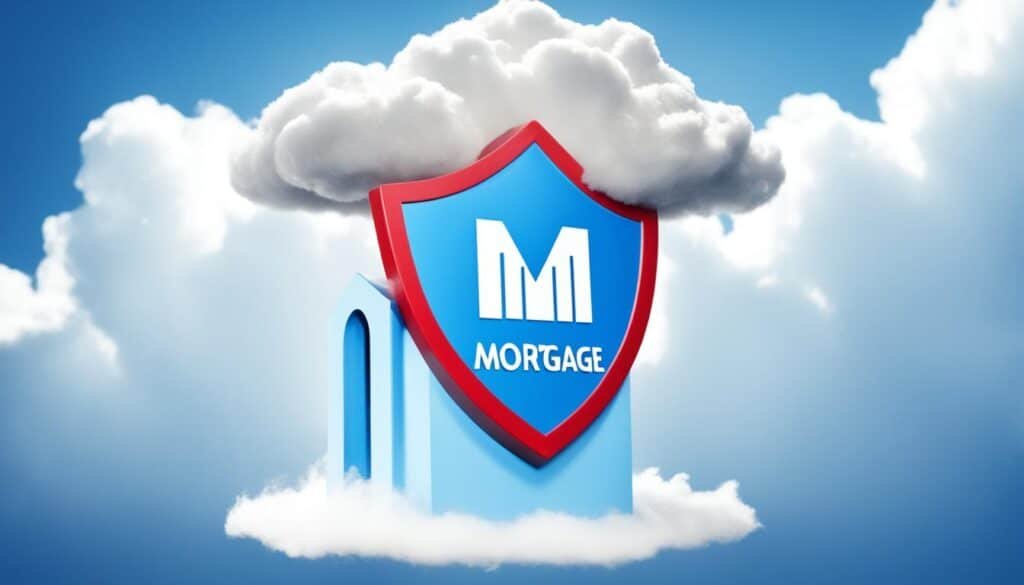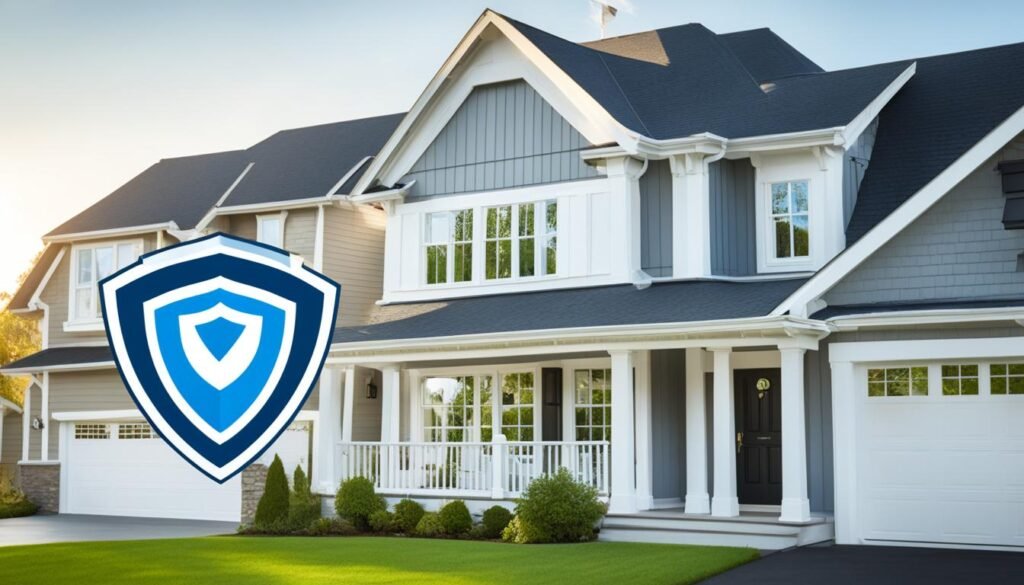When it comes to purchasing a home, many borrowers find themselves needing to secure a mortgage loan to finance the purchase. However, for those making a down payment of less than 20 percent of the home’s purchase price, mortgage insurance is typically required. This type of insurance policy is designed to protect the mortgage lender in the event that the borrower defaults on their loan. By lowering the risk to the lender, mortgage insurance can help borrowers who might not otherwise qualify for a conventional mortgage loan to secure the financing they need to become homeowners.
Mortgage insurance, whether it’s private mortgage insurance (PMI), Federal Housing Administration (FHA) mortgage insurance premium (MIP), or another type, serves a specific purpose – to protect the lender, not the borrower. If a borrower falls behind on their monthly mortgage payments and the home goes into foreclosure, the mortgage insurance policy ensures that the lender is fully repaid, even if the sale of the foreclosed property is not enough to cover the outstanding mortgage balance.
There are several different types of mortgage loans available to borrowers with low down payments, each with their own mortgage insurance requirements. Understanding how mortgage insurance works, the various options, and the potential costs involved can help prospective homebuyers make informed decisions as they navigate the path to homeownership.
Key Takeaways
- Mortgage insurance is typically required for borrowers making a down payment of less than 20% of the home’s purchase price.
- Mortgage insurance protects the lender, not the borrower, in the event of default or foreclosure.
- There are several types of mortgage insurance, including private mortgage insurance (PMI), FHA mortgage insurance premium (MIP), and others.
- Mortgage insurance can provide access to homeownership for borrowers who might not otherwise qualify for a conventional mortgage loan.
- The cost of mortgage insurance is often included in the borrower’s monthly mortgage payment.
Introduction to Mortgage Insurance
Mortgage insurance is an essential component of the home buying process for many borrowers. It is an insurance policy that lenders require to protect themselves against the risk of a borrower defaulting on their mortgage loan. The purpose of mortgage insurance is to lower the risk for the lender, allowing them to provide financing to borrowers who might not otherwise qualify for a loan.
Definition and Purpose of Mortgage Insurance
Mortgage insurance is a type of policy that provides coverage to the lender in the event that a borrower fails to make their monthly mortgage payments. This insurance policy helps to protect the lender’s investment in the property, ensuring that they are able to recoup their losses in the event of a foreclosure. The primary purpose of mortgage insurance is to enable borrowers with smaller down payments, typically less than 20% of the home’s value, to qualify for a mortgage loan.
When Mortgage Insurance is Required
Mortgage insurance is typically required for borrowers who make a down payment of less than 20% of the home’s purchase price. This includes conventional mortgage loans, as well as government-backed loan programs such as those offered by the Federal Housing Administration (FHA) and the U.S. Department of Agriculture (USDA). In these cases, the mortgage insurance premium is added to the borrower’s monthly mortgage payment, providing an extra layer of protection for the lender.
Types of Mortgage Insurance

When it comes to mortgage insurance, there are several different types available to borrowers. Understanding the various options and their specific requirements can help homebuyers make informed decisions about the type of loan and mortgage insurance that best suits their financial situation.
Private Mortgage Insurance (PMI)
Private mortgage insurance (PMI) is the most common type of mortgage insurance and is typically required for conventional loans with a down payment of less than 20% of the home’s purchase price. PMI premiums are paid monthly as part of the borrower’s mortgage payment and can typically be canceled once the borrower reaches 20% equity in their home.
Federal Housing Administration (FHA) Mortgage Insurance Premium (MIP)
FHA loans require an upfront Mortgage Insurance Premium (MIP) as well as an annual MIP that is paid monthly as part of the borrower’s mortgage payment. The MIP rate and duration depends on the loan-to-value ratio and loan term, but it is generally required for the life of the loan.
USDA Mortgage Insurance
For USDA loans, borrowers are required to pay an upfront Guarantee Fee, as well as an annual Guarantee Fee that is included in the monthly mortgage payment. The Guarantee Fee helps offset the risk to the USDA for providing the loan guarantee.
VA Mortgage Insurance
VA loans do not require mortgage insurance, but borrowers are required to pay a funding fee, which can be financed into the loan amount. The funding fee percentage varies based on the type of VA loan, the size of the down payment, and whether it is the borrower’s first use of the VA loan benefit.
Ultimately, the type of mortgage insurance required will depend on the type of loan the borrower chooses, as well as the size of their down payment. Understanding the various mortgage insurance options and their associated costs is an important part of the home buying process.
How Mortgage Insurance Works

Mortgage insurance, no matter the type, is designed to protect the lender– not the borrower – in the event the borrower falls behind on their payments. If the borrower defaults, their credit score could suffer, potentially leading to the loss of their home through foreclosure. In the worst-case scenario, where the foreclosure sale fails to cover the full mortgage balance, the mortgage insurance steps in to make up the difference, ensuring the lender is repaid in full.
Protection for Lenders, Not Borrowers
Mortgage insurance is a risk-mitigation tool for lenders, lowering the risk of extending a loan to borrowers who may not have a 20% down payment. While it allows these borrowers to qualify for a mortgage they might not otherwise be able to obtain, the insurance policy itself protects the lender, not the borrower. In the event of default, the borrower’s credit score can be negatively impacted, and they may ultimately lose their home to foreclosure.
Calculation of Mortgage Insurance Premiums
The cost of mortgage insurance, known as the mortgage insurance premium, is typically based on factors such as the loan-to-value (LTV) ratio, the borrower’s credit score, and the type of mortgage. Borrowers with a lower down payment (less than 20%) or riskier credit profiles may pay a higher upfront mortgage insurance premium or a higher monthly mortgage insurance payment. In some cases, the lender may even opt to pay the lender-paid mortgage insurance premium, which can result in a slightly higher interest rate for the borrower.
| Factor | Impact on Mortgage Insurance Premium |
|---|---|
| Loan-to-Value (LTV) Ratio | Higher LTV (lower down payment) leads to higher mortgage insurance premiums |
| Borrower Credit Score | Lower credit scores typically result in higher mortgage insurance premiums |
| Mortgage Type | FHA loans, USDA loans, and VA loans have their own mortgage insurance requirements and premiums |
Understanding how mortgage insurance works, its purpose, and the factors that influence the cost is crucial for borrowers making a home purchase with a down payment of less than 20%. By being aware of these details, borrowers can make informed decisions and, in some cases, avoid or minimize the need for mortgage insurance.
Costs of Mortgage Insurance

The cost of mortgage insurance can vary depending on the type of insurance and the borrower’s specific circumstances. On average, borrowers can expect to pay 0.1% to 1% of the home loan amount annually for mortgage insurance. The exact cost of pmi will depend on factors such as the type of mortgage insurance (e.g., PMI, FHA MIP, USDA, VA), the borrower’s credit score, the loan-to-value ratio, and the mortgage term.
The mortgage insurance payments are typically included in the borrower’s monthly mortgage payment. The mortgage insurance rate can have a significant impact on the overall payment and mortgage costs, so it’s important for borrowers to understand the annual mortgage insurance premium they’ll be expected to pay.
| Mortgage Insurance Type | Average Annual Cost |
|---|---|
| Private Mortgage Insurance (PMI) | 0.55% – 2.25% of the loan amount |
| FHA Mortgage Insurance Premium (MIP) | 0.45% – 1.05% of the loan amount |
| USDA Mortgage Insurance | 0.35% of the loan amount |
| VA Mortgage Insurance | No monthly premium, but a one-time funding fee of 1.4% – 3.6% of the loan amount |
It’s important to note that the much is pmi and other mortgage insurance costs can significantly impact the overall affordability of a home purchase, so borrowers should carefully consider these expenses when budgeting and shopping for a mortgage.
Mortgage Insurance

Mortgage insurance is an insurance policy that protects lenders from losses in case borrowers default on their mortgage loans. It is typically required for borrowers making a down payment of less than 20% of the home’s purchase price, as well as for certain government-backed loan programs like FHA, USDA, and VA loans. The purpose of mortgage insurance is to lower the risk to the lender of making a loan to a borrower, so the borrower can qualify for a loan they might not otherwise be able to get. However, mortgage insurance protects the lender, not the borrower, in the event of default.
Borrowers may be required to pay for mortgage insurance on conventional loans, FHA loans, VA loans, and USDA loans if their down payment is less than 20% of the home’s value. The monthly mortgage payment will include the mortgage insurance premium, which can add significant costs to the overall home loan. Understanding the types of mortgage insurance and their associated costs is an important part of the home buying process.
Avoiding Mortgage Insurance

If you’re looking to avoid paying mortgage insurance, there are a few strategies you can consider. One of the most straightforward ways is to make a down payment of 20% or more on your home purchase. By putting down at least 20% of the home’s value, you can bypass the need for mortgage insurance entirely, as lenders typically only require it for borrowers with a down payment of less than 20%.
Down Payment of 20% or More
Saving up for a larger down payment can be challenging, but it can ultimately save you thousands of dollars in mortgage insurance premiums over the life of your loan. If you’re able to make a 20% or higher down payment, you’ll not only avoid paying pmi, but you may also qualify for a lower interest rate and a smaller monthly mortgage payment.
Choosing Loans that Don’t Require Mortgage Insurance
Another option to avoid mortgage insurance is to choose a loan type that doesn’t require it, such as a conventional mortgage with a down payment of 20% or more. Additionally, VA loans and USDA loans do not require mortgage insurance, making them attractive options for eligible borrowers with a smaller down payment.
Canceling PMI Once You Reach 20% Equity
If you’ve already purchased a home with a down payment of less than 20% and are paying private mortgage insurance (PMI), you may be able to cancel the PMI once you’ve built up at least 20% equity in your home. This can be done by requesting that your lender remove the PMI once you’ve reached the necessary equity threshold, or by refinancing your mortgage to a loan that doesn’t require mortgage insurance.
Mortgage Insurance Regulations and Laws
The mortgage industry is heavily regulated, and there are several laws and regulations that govern the use of mortgage insurance. Two of the most notable are the Homeowners Protection Act and the mortgage insurance termination rules.
Homeowners Protection Act
The Homeowners Protection Act was enacted in 1998 to provide homeowners with the right to cancel their private mortgage insurance (PMI) once they have built up sufficient equity in their homes. Under this law, lenders are required to automatically terminate PMI when the loan-to-value ratio reaches 78% of the original home value. Homeowners can also request PMI cancellation once their equity reaches 20% of the home’s original value.
Mortgage Insurance Termination Rules
In addition to the Homeowners Protection Act, there are also mortgage insurance termination rules that dictate when and how mortgage insurance can be canceled. These rules vary depending on the type of loan and the type of mortgage insurance required. For example, FHA mortgage insurance premiums are typically required for the life of the loan, while private mortgage insurance can be canceled once the homeowner reaches 20% equity.
Understanding the mortgage insurance regulations and laws that apply to your specific loan is important, as they can impact when and how you can remove private mortgage insurance and reduce your monthly costs.
Benefits and Drawbacks of Mortgage Insurance

The main benefit of mortgage insurance is that it provides increased access to homeownership for borrowers who are unable to make a 20% down payment. By lowering the risk to the lender, mortgage insurance allows these borrowers to qualify for a loan they might not otherwise be able to get.
Increased Access to Homeownership
For buyers with a smaller down payment, typically less than 20% of the home’s value, mortgage insurance is often required. This can be especially helpful for first-time homebuyers or those with limited savings. By making it possible for these buyers to purchase a home with a smaller down payment, mortgage insurance can increase access to homeownership.
Additional Monthly Costs
While mortgage insurance can help borrowers get a mortgage with a smaller down payment, it does come with a downside – the additional monthly costs. Borrowers who need to pay for mortgage insurance will pay for mortgage insurance as part of their monthly mortgage payment, which can increase the overall cost of homeownership.
| Benefits of Mortgage Insurance | Drawbacks of Mortgage Insurance |
|---|---|
|
|
Also Read: Understanding Mortgage Interest Rates: Factors And Fluctuations
Conclusion
In conclusion, mortgage insurance is an essential component of the home buying process for many Americans. This insurance policy protects mortgage lenders from losses in the event of borrower default, allowing those with less than a 20% down payment to qualify for a mortgage. While mortgage insurance adds additional monthly costs, it can be a worthwhile investment for those seeking to achieve homeownership.
Understanding the different types of mortgage insurance, such as Private Mortgage Insurance (PMI), Federal Housing Administration (FHA) Mortgage Insurance Premium (MIP), USDA Mortgage Insurance, and VA Mortgage Insurance, is crucial. Borrowers should carefully evaluate the costs and requirements of each option to determine the best fit for their financial situation and long-term goals.
Fortunately, there are ways to avoid or minimize mortgage insurance, such as making a larger down payment, choosing a loan type that doesn’t require it, or canceling PMI once you reach 20% equity in your home. By staying informed and exploring all available options, homebuyers can make informed decisions that optimize their mortgage experience and set them up for long-term financial success.
FAQs
Q: What is mortgage insurance?
A: Mortgage insurance is a type of insurance policy that protects a mortgage lender in case the borrower defaults on the loan.
Q: How does mortgage insurance work?
A: Mortgage insurance covers a portion of the lender’s losses if a borrower fails to make their mortgage payments. It allows borrowers to secure a home loan with a down payment of less than 20% of the home’s value.
Q: How much is private mortgage insurance (PMI)?
A: The cost of PMI can vary depending on factors such as the loan amount, down payment, and credit score. On average, PMI can range from 0.3% to 1.5% of the original loan amount per year.
Q: How can I get rid of mortgage insurance?
A: To get rid of mortgage insurance, you can either reach a loan-to-value ratio of 80% or lower by making additional payments towards your mortgage principal, or by requesting the lender to remove PMI when your home’s value has increased.
Q: What is a VA loan and how does it relate to mortgage insurance?
A: A VA loan is a mortgage option for veterans, active military members, and eligible surviving spouses. VA loans do not require mortgage insurance, making them an attractive option for borrowers looking to avoid PMI.
Q: Do I need to pay for PMI if I have a second mortgage?
A: If you have a second mortgage, you may still be required to pay for PMI on the first mortgage if your down payment is less than 20% of the home’s value. The second mortgage does not eliminate the need for PMI.
Q: How does mortgage insurance cover benefit me as a borrower?
A: Mortgage insurance cover benefits borrowers by allowing them to qualify for a home loan with a lower down payment, making homeownership more accessible. It also protects the lender, which can lead to better loan terms for the borrower.





